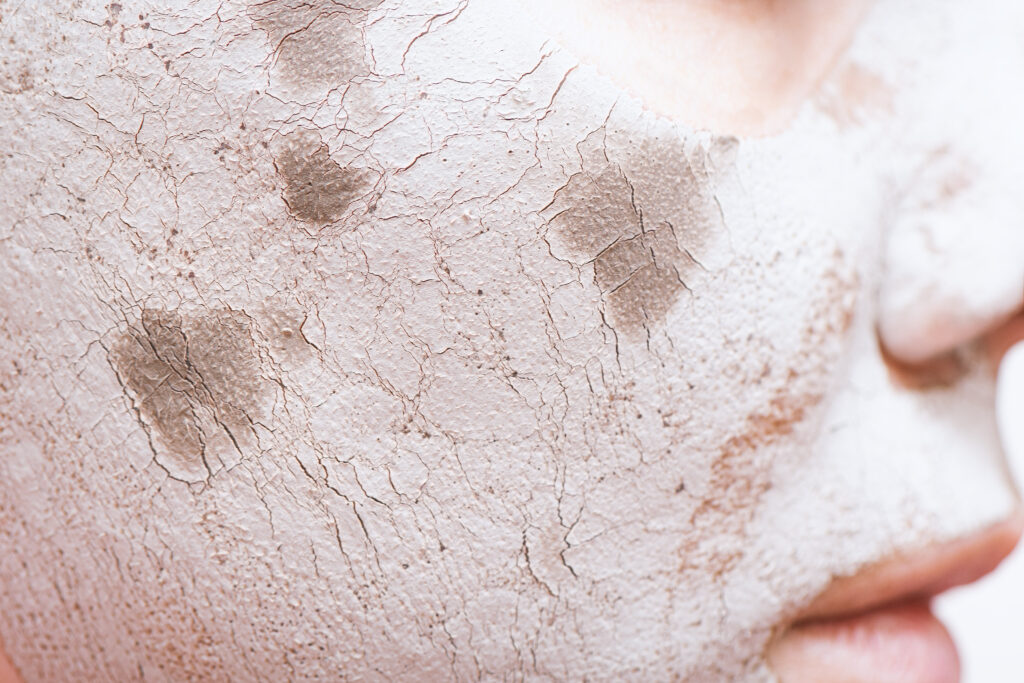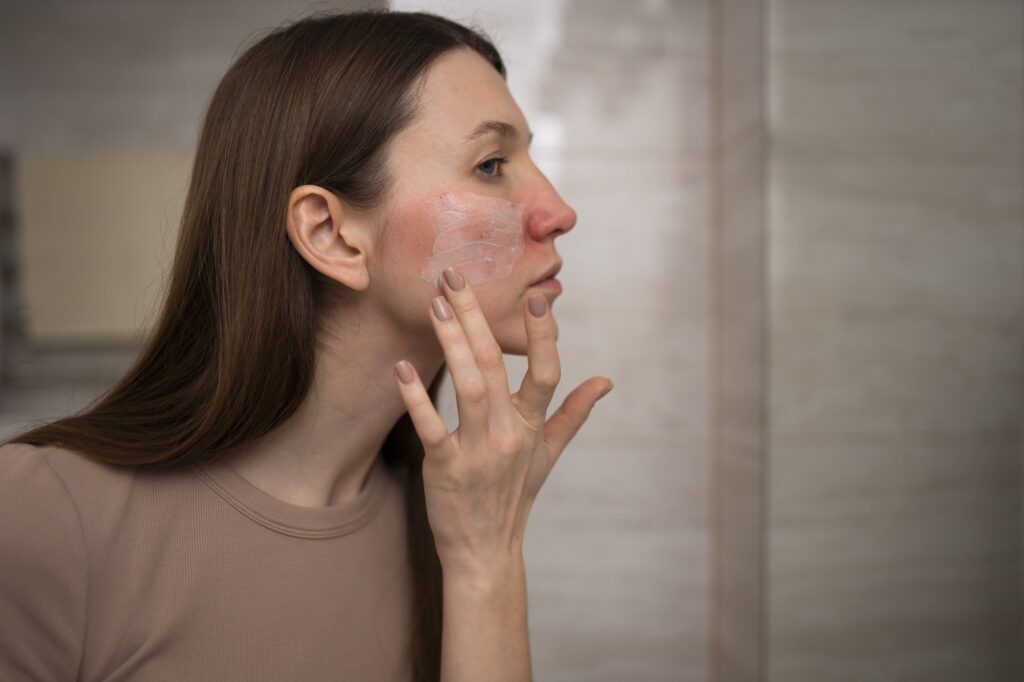Winter has its charm and beauty but, with the start of the winter season, different kinds of problems also start such as dryness of the skin, itching and chapping on the lips, etc. There are multiple reasons behind these issues. Skin is a vital organ that covers the rest of the body and provides protection. Skin is the organ of the body that faces all external hazards like heat, cold, and sun rays, etc. Healthy skin is very important because healthy skin means a healthy life. Skin problems might be due to some minor issue in its initial stages which may worsen with time if these issues aren’t treated properly, so the need is to understand the issue and then eradicate it at the initial stage to avoid further complications. Dry winter skin is considered an indicator for the assessment of many health problems. In this article, we will discuss all skin-related issues in detail. If you are suffering skin problems during the winter season this article will provide you with a guideline. By following these instructions you can get rid of these skin problems effectively.
Understanding Dry Winter Skin
People have not same skin type, and that is the reason why the skin of different people behaves differently in the winter season.Understanding the nature and characteristic features of the dry winter skin is very important in dealing with skin issues. If you know the nature of your skin and you know how to treat your skin issues you can save both your time and money and can handle your skin problem at home through simple home remedies. For good results the first thing is to understand the types of skin. There are four basic types of skin:
- Dry skin
- Oily skin
- Combination skin
- Sensitive skin
Dry skin
This is a distinct type of skin with its specific features. During the winter season, people with dry winter skin suffer from many problems such as sensitivity, flakiness, and itching. People with dry winter skin require special winter skincare routine especially during the winter season because ignorance of the above-mentioned problem becomes severe if they are left untreated. At initial stages, these issues can be removed easily at home through simple home remedies.
Oily Skin
Oily skin is characterized by the development of acne along with enlarged pores. Oily skin shine and oil on the skin can be felt with the hand. It has been found that oily skin is easily dehydrated because it has a tendency to produce more oil on the skin than normal. Winter season for oily skin can create problems so there should be some extra winter skincare to avoid complications. People with oily skin are advised to wash their face regularly at least three to five times a day.
Combination Skin
Combination skin has features of both types of skin dry and oily skin. Such people are found to have oily foreheads, noses, drier cheeks, etc. The oil region is prescribed as the T-zone as this area of the face produces more oil than the rest of the face. During winter such people have to face dryness on the skin while at the T- zone there appears oil. If people with combination skin feel some difficulties to deal with their skin issue they should consult with the skin specialist for better guidance.
Sensitive Skin
This is a fourth basic type of skin which is very sensitive and this kind of skin is never easy to handle, especially through home remedies. People with this kind of skin need some extra care before applying any kind of cream or use of soap. Such people are advised to go with the things that suit their skin. If you have sensitive skin and you want to try a new ointment on your skin, first apply it on an experimental basis on a small area such as the skin of the arm, and check the result if you feel that there is no issue you can apply on other parts of the body such as the face. If after use you observe redness or irritation stop using the product at once. Winter season is very difficult for such people because colds directly affect the skin.
How to Identify your Skin Type?
Skin is of different types and each type of skin has special behavior that should be known to the person. Identification of the type of skin is not easy for everyone. Without knowledge when people treat their skin often they don’t get their desired results rather they have to face adverse effects. So, there should be proper know-how about the skin. There are two different methods to know the type of your skin.
- Waiting method
- Blotting method
Waiting Method
This is a very simple method to know the type of your skin and you can easily confirm your type of skin at home. Just wash your face with a cleanser, wait for the next half an hour and try to feel your skin. If you feel sticky then obviously your skin is oily and if you don’t feel any oil and there is little tightness in your skin then you have dry skin. Sometimes it happens that you feel both tightness and stickiness in different parts of the face then your skin is surely a combination of both dry and oily skin and if you feel any kind of irritation and redness after applying cleanser on your face your face is sensitive. Blotting Method
Blotting Method
This is also a comprehensive method to get identification of the type of your skin. In this method a blotting paper is used. Keep blotting paper on different parts of the face and after some time a quantity of oil will be noted against light. If there is dryness and no oil appears under light your skin is dry and if you note oil on the paper under light then your skin is surely oily. Sometimes some parts of blotting paper show oil and some remain totally dry then in this case your skin is a combination of both oily and dry skin and if you feel any kind of irritation and redness after applying blotting paper on your face your skin is sensitive.
What Causes Dry Winter Skin?
This question is frequently asked by people why is our skin dry with the start of the winter season? Answers to this question can easily be found by learning the chemistry of the skin and environmental conditions during winter. With the start of winter both humidity in the air, and temperature change. These two environmental factors provide perfect conditions for xerosis, and dryness of skin. Our skin consists of the epidermis and dermis. Skin barrier is formed of lipids and dead cells of the skin although these are dead cells these cells protect the inner parts of the body. In the absence of moisture, this barrier breaks and prevails over the dryness of the skin. Moisture keeps this barrier intact and healthy so that it performs normally.
Another vital factor that makes the skin dry is the use of a heater inside the home. Heaters are used most of the time during winter, reducing humidity in the air and thus contributing to and supporting dryness of the skin.
Another important factor that contributes a lot to drying out of the moisture is the harsh weather conditions outside. Low levels of humidity and extremely low temperatures along with harsh wind strip moisture out of the skin and increase dryness.
It is general practice during winter that the use of water decreases and often when people take a bath they use commonly hot water. The use of hot water first drains moisturizer from the skin and secondly, it also damages the skin surface badly. All of these factors increase the process of drying skin many-fold during the winter season.
Another factor is the chemical nature of the soap that people use during showers. To enhance the working of the soap, industries use stronger chemical formulae. These soaps not only remove waste products from the body but also damage the skin cells.
There are many other factors that can play their role in dry winter skin during winter such as age and gender. Skin health varies with the passage of time as age increases, making it difficult for the skin cells to maintain the required level of moisturizer over the skin. The internal health of a person is also important in this regard. There are many diseases in which the body dehydrates and dry skin is the symptom of many such diseases.
Symptoms of Dry Winter Skin
- Flaking and rough patches on skin.
- Cracks may appear on the skin during winter as these are major symptoms of skin dryness.
- In some cases, skin color may change and red patches are formed.
- In severe cases, itching starts which further becomes sensitive to touch.
Symptoms of dry skin are not the same for everyone. Sometimes more than one symptom has been observed at a single time. Carefully observe the symptoms if symptoms are severe then immediately consult with your skin care specialist to reduce the severity.
Winter Skincare Routine
To prevent your skin from the harmful effects of dry winter skin and to keep your skin healthy following precautions can provide you with good results.
Using Cleanser: During the winter season when there is extreme cold outside, you should change your soap especially when you are using soap with a strong chemical nature. You should use a soft, gentle cleanser that your skin care specialist suggests to you. Creamy face wash has been found effective in dealing with dry skin issues.
During face wash do not rub your face hard rather massage your face gently for a minute and then rinse your face with mild hot water.
Applying Toner: Winter skincare routine requires you to follow a complete procedure step by step. Tonig is an essential step to maintain the pH value of the face skin. It also reduces the number of pores on the skin. To achieve perfect skin during winter toners free from alcohol are considered perfect. After applying the toner on your face don’t wash it. wait toner will dry itself after some time
Serum Application: Active ingredients in concentrated form address specific skin concerns. These active ingredients are available in the form of skincare serums. They penetrate your skin to keep it hydrated and flexible even in winter. But be conscious about their use, as these serums are more potent than cleansers and moisturizers. Take a few drops of serum and apply it to your skin. Use a broad-spectrum sunscreen after applying these serums. Always prioritize skincare products based on skin concerns.
Applying Moisturizers: Maintaining healthy skin in winter is impossible without using moisturizers. It retains moisture in your skin to prevent moisture loss. Moisturizing lotions and creams help seal moisture that maintains a barrier in your skin to protect it against environmental aggressors. Rich-in-cream winter moisturizers can help nourish your skin in winter and protect it from the harsh effects of winter wind.
Preventive Measures for Dry Winter Skin You can avoid winter dry skin by following the tips jotted below for getting flawless skin when the seasons change. The tips are:
You can avoid winter dry skin by following the tips jotted below for getting flawless skin when the seasons change. The tips are:
- Keep yourself hydrated by drinking plenty of water, as hydration boosts the smoothness of the skin.
- Follow a proper winter skincare routine, including the use of high-quality or natural moisturizers and toners.
- Limit heat or fire exposure by taking a lukewarm shower instead of a hot one. Avoid sitting in front of heat-emitting devices or fire.
- Keep your skin covered with clothes to prevent dryness on your hands and feet. Therefore wearing gloves while washing dishes and in cold temperatures is encouraged in the winter season.
Conclusion
Being careful about your winter skincare routine and skincare products can help you maintain healthy skin in the winter season. Although dry winter skin is not an inevitable result of the winter season, people can take preventive measures to prevent uncomfortable conditions. Implementing the basic winter skincare routine steps may be helpful in achieving glowing and smooth skin in the coldest times of the year.
Several home remedies and natural products can improve winter dry skin. If these skincare steps have no effect, you can contact a professional dermatologist or a doctor. They can provide you with the right information about your skin condition and recommend the best winter skincare routine.







